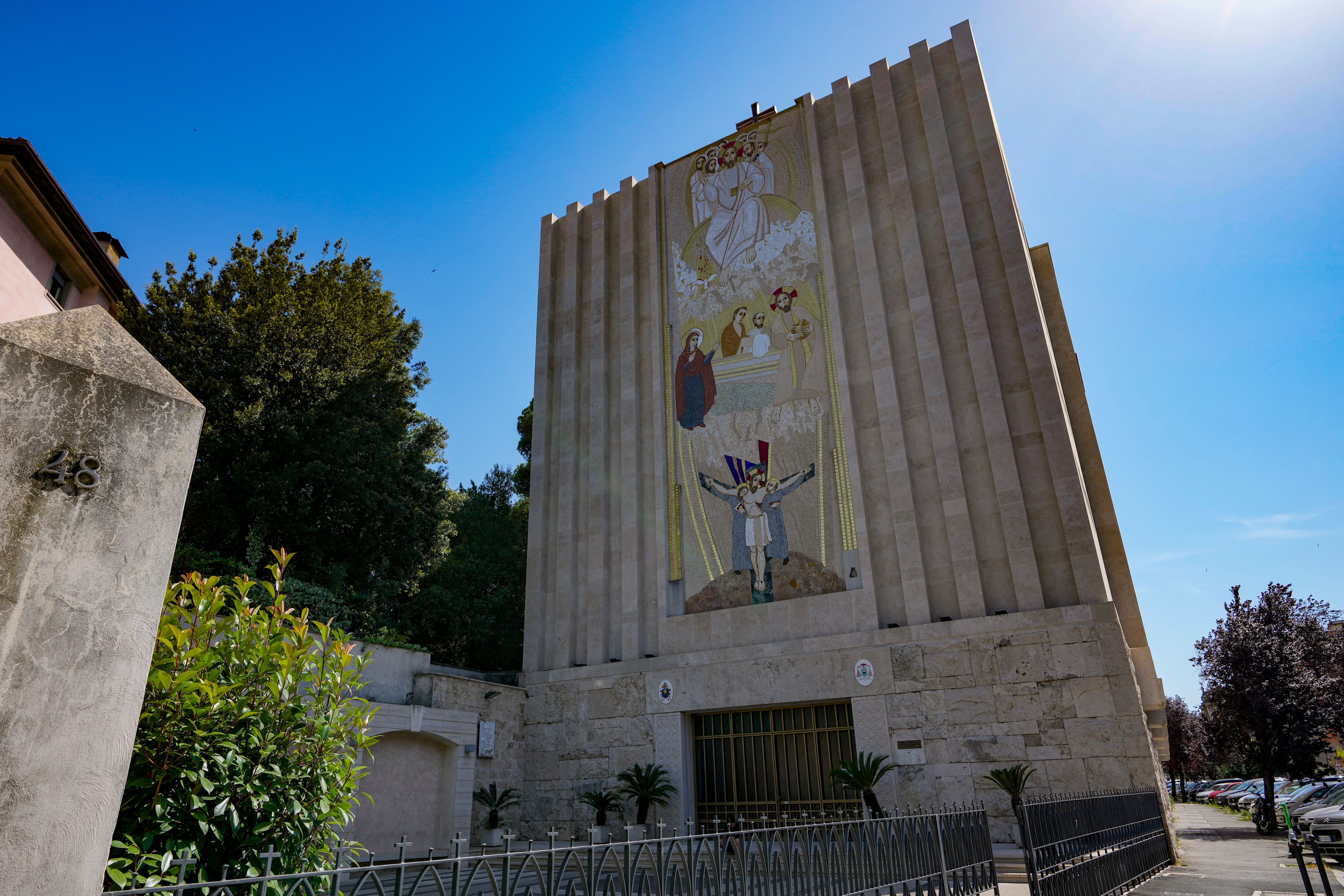
Support truly
independent journalism
Our mission is to deliver unbiased, fact-based reporting that holds power to account and exposes the truth.
Whether $5 or $50, every contribution counts.
Support us to deliver journalism without an agenda.

Louise Thomas
Editor
A bishop has put off any decision on whether to remove mosaics by an ex-Jesuit artist accused of abusing women.
Adding that the work will stay for now on the Lourdes shrine but that eventually they should be removed.
The mosaics will no longer be highlighted each night during the evening prayer, said Lourdes Bishop Jean-Marc Micas, in a statement. But he told the French Catholic daily La Croix that he had decided not to remove them now because he didn’t want to “tear the church apart.”
“My deep, formed, intimate conviction is that they will one day need to be removed: they prevent Lourdes from reaching all the people for whom the sanctuary’s message is intended,” Micas was quoted as saying. “But I have decided not to remove them immediately, given the passions and violence the subject incites.”
The Rev. Marko Rupnik has been accused by over 20 women of psychological, spiritual and sexual abuses over decades. He hasn't responded to the allegations and refused to cooperate with an investigation by his former Jesuit order, but his collaborators have denounced what they called a media “lynching.”
The Jesuits expelled him last year after determining the women's claims were “very highly credible." Some women say the abuse occurred during the creation of the artwork itself, rendering the mosaics a triggering and traumatic reminder of what they endured.
The Vatican opened a canonical investigation into Rupnik last October, after an outcry that his victims hadn’t received justice and suspicions that he had been protected by Jesuits up to and including Pope Francis. The pope denied any significant involvement but confirmed Rupnik had been excommunicated for committing one of the Catholic Church's most serious crimes: using the confessional to absolve a woman with whom he had engaged in sexual activity.

The debate about what to do with his mosaics has simmered for two years, precisely because the works are so widespread: They grace some of the Catholic Church's most important and visited shrines, basilicas and sanctuaries around the world.
The debate exploded anew last week after the Vatican’s communications chief strongly defended continuing to use Rupnik artwork on the Vatican News website.
His position prompted the pope's top anti-abuse adviser, Cardinal Sean O’Malley, to send a letter to all Vatican offices urging them to stop featuring Rupnik’s artwork. O’Malley said continuing to promote it ignores the pain of victims and could imply a defense of the Slovene priest.
Micas acknowledged as much in his statement and interview with La Croix, saying he understood that the mosaics have become a barrier to victims coming to pray at Lourdes because they associate them with abuse.
A study commission he formed to offer advice provided diverging recommendations: some said removing the mosaics wouldn’t do anything for victims, and that removing them would succumb to the trend of “cancel culture.”
“On the other side, the point of view was that the church risked prioritizing an object over people once again. Artistic or economic considerations could overshadow the church’s proclaimed care for victims of abuse by clergy,” Micas said.
Given the polarization, he decided to continue studying the issue.
On the day O'Malley sent a letter to the Vatican, five women — who accused Rupnik of abusing them — sent letters to bishops around the world urging them to remove their Rupnik mosaics.
One of them, French Sister Samuelle, told The Associated Press that Rupnik had touched her intimately precisely as they were putting up a mosaic, on a scaffolding.
“Today, how can I be at peace in front of certain mosaics for which I vividly remember certain things?" Sister Samuelle told AP. "In front of that Madonna, or in that church, or that other place I know that Rupnik, as soon as he had finished this piece of mosaic, approached and began to touch my back. How can I look at these mosaics in peace today? How can I see the image of God without remembering the violence of these gestures and the psychological violence and pressure from Rupnik? I can’t.”







